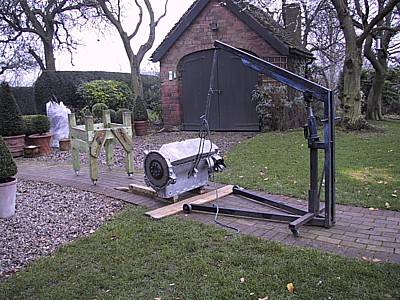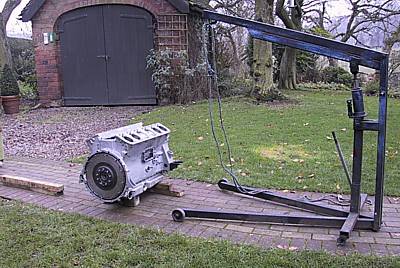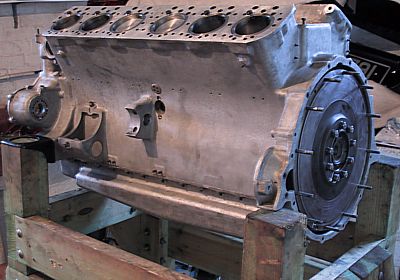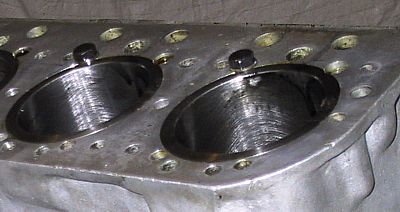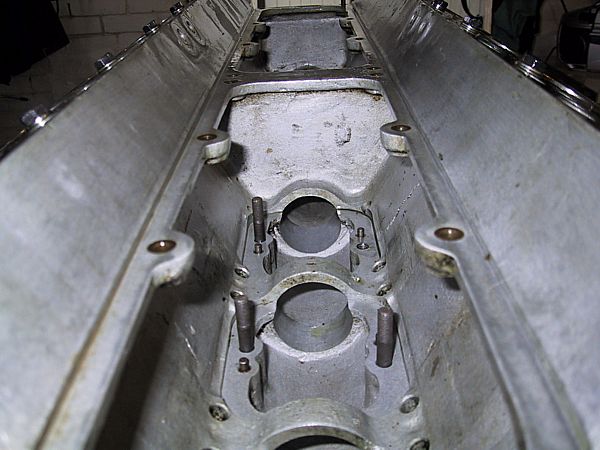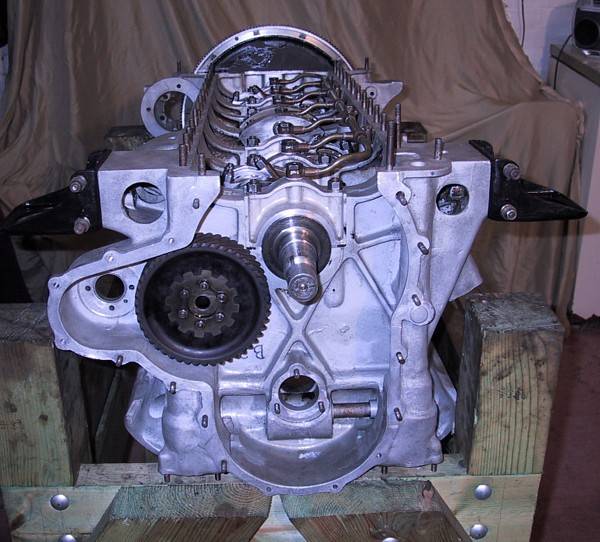
Main bearing oil pipe installed. The banjo attachment to the bearing cap is sealed by an aluminium washer against the cap and a steel tab washer under the hollow-bolt head. The oil supply enters the pipe, from the pressure relief valve, adjacent to the #3 bearing; this union also being sealed against the block with an aluminium washer.
Care is required, when fitting the tab washers, that the mating surfaces are not buckled (especially when using the PIIITS sets which are slightly thicker than original). It is surprising how much time is spent in repeating this seemingly insignificant task.
Can you spot the mistake? Look at 28th January 2003!
